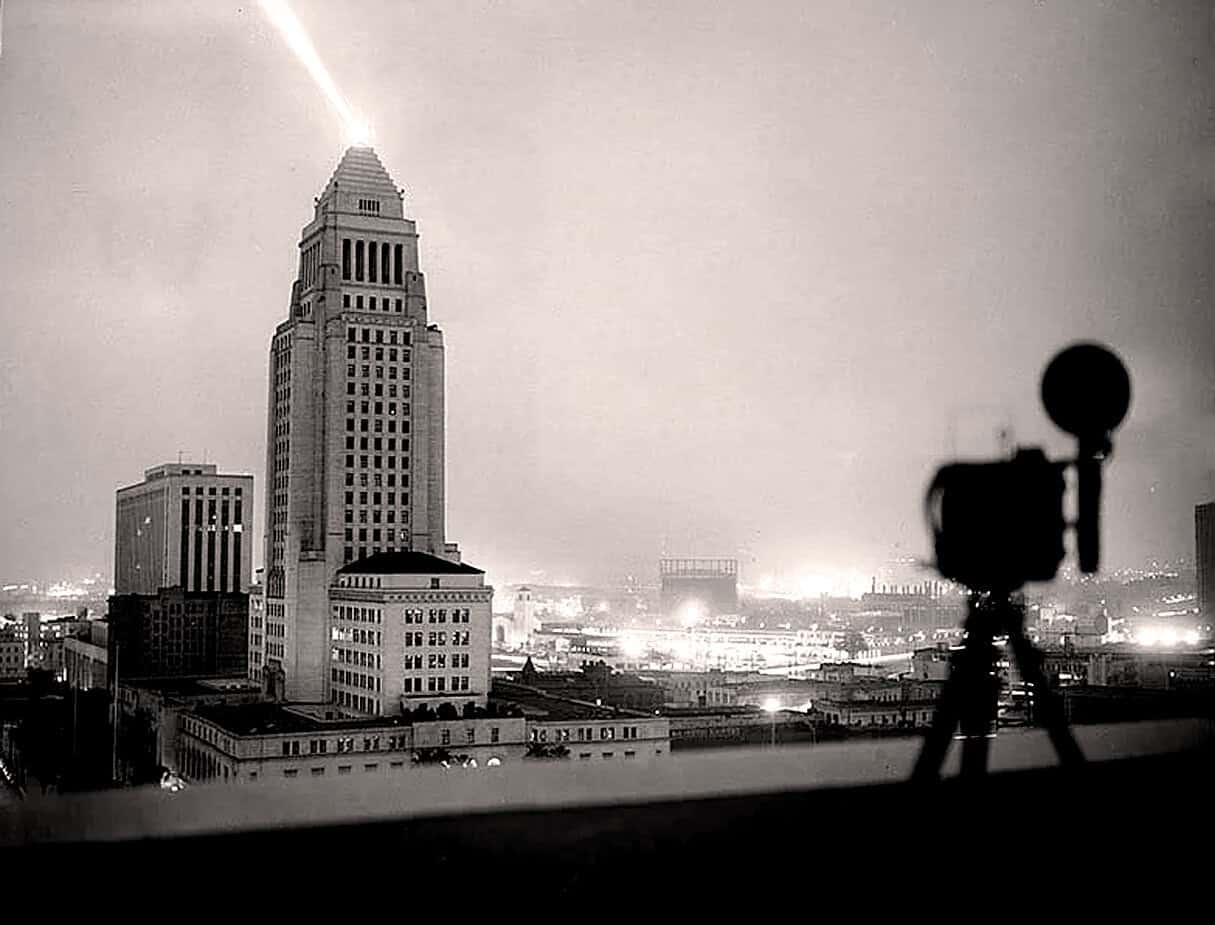
American Forum – Is Atomic Testing Endangering Your Life? September 1, 1957 – Gordon Skene Sound Collection –
Nuclear Testing: Ever since the Atomic Bomb made its debut at the end of World War 2, Politicians and Scientists have been struggling with the potential health hazards associated with Nuclear Testing. Everyone knew what the bomb itself could do, but not many really had any idea what the mere testing of it could mean.
A little background on the subject of Nuclear Testing via Wikipedia:
The first atomic weapons test was conducted near Alamogordo, New Mexico, on July 16, 1945, during the Manhattan Project, and given the codename “Trinity”. The test was originally to confirm that the implosion-type nuclear weapon design was feasible, and to give an idea of what the actual size and effects of a nuclear explosion would be before they were used in combat against Japan. While the test gave a good approximation of many of the explosion’s effects, it did not give an appreciable understanding of nuclear fallout, which was not well understood by the project scientists until well after the atomic bombings of Hiroshima and Nagasaki.
The United States conducted six atomic tests before the Soviet Union developed their first atomic bomb (RDS-1) and tested it on August 29, 1949. Neither country had very many atomic weapons to spare at first, and so testing was relatively infrequent (when the U.S. used two weapons for Operation Crossroads in 1946, they were detonating over 20% of their current arsenal). However, by the 1950s the United States had established a dedicated test site on its own territory (Nevada Test Site) and was also using a site in the Marshall Islands (Pacific Proving Grounds) for extensive atomic and nuclear testing.
The early tests were used primarily to discern the military effects of atomic weapons (Crossroads had involved the effect of atomic weapons on a navy, and how they functioned underwater) and to test new weapon designs. During the 1950s, these included new hydrogen bomb designs, which were tested in the Pacific, and also new and improved fission weapon designs. The Soviet Union also began testing on a limited scale, primarily in Kazakhstan. During the later phases of the Cold War, though, both countries developed accelerated testing programs, testing many hundreds of bombs over the last half of the 20th century.
In 1954 the Castle Bravo fallout plume spread dangerous levels of radiation over an area over 100 miles (160 km) long, including inhabited islands.
Atomic and nuclear tests can involve many hazards. Some of these were illustrated in the U.S. Castle Bravo test in 1954. The weapon design tested was a new form of hydrogen bomb, and the scientists underestimated how vigorously some of the weapon materials would react. As a result, the explosion—with a yield of 15 Mt—was over twice what was predicted. Aside from this problem, the weapon also generated a large amount of radioactive nuclear fallout, more than had been anticipated, and a change in the weather pattern caused the fallout to spread in a direction not cleared in advance. The fallout plume spread high levels of radiation for over 100 miles (160 km), contaminating a number of populated islands in nearby atoll formations. Though they were soon evacuated, many of the islands’ inhabitants suffered from radiation burns and later from other effects such as increased cancer rate and birth defects, as did the crew of the Japanese fishing boat Daigo Fukuryū Maru. One crewman died from radiation sickness after returning to port, and it was feared that the radioactive fish they had been carrying had made it into the Japanese food supply.Because of concerns about worldwide fallout levels, the Partial Test Ban Treaty was signed in 1963. Above are the per capita thyroid doses (in rads) in the continental United States resulting from all exposure routes from all atmospheric nuclear tests conducted at the Nevada Test Site from 1951 to 1962.
Castle Bravo was the worst U.S. nuclear accident, but many of its component problems—unpredictably large yields, changing weather patterns, unexpected fallout contamination of populations and the food supply—occurred during other atmospheric nuclear weapons tests by other countries as well. Concerns over worldwide fallout rates eventually led to the Partial Test Ban Treaty in 1963, which limited signatories to underground testing. Not all countries stopped atmospheric testing, but because the United States and the Soviet Union were responsible for roughly 86% of all nuclear tests, their compliance cut the overall level substantially. France continued atmospheric testing until 1974, and China until 1980.
To go along with that, here is a discussion from the American Forum Radio program from September 1, 1957 on the subject of the safety of nuclear testing and its potential hazards.






I watched this hauntingly creative look at the history of nuclear detonations with my 13 y.o. daughter recently. She was appalled at the counts. https://www.youtube.com/watch?v=LLCF7vPanrY
“A Time-Lapse Map of Every Nuclear Explosion Since 1945 – by Isao Hashimoto”
It hasn’t been updated for N Korea.